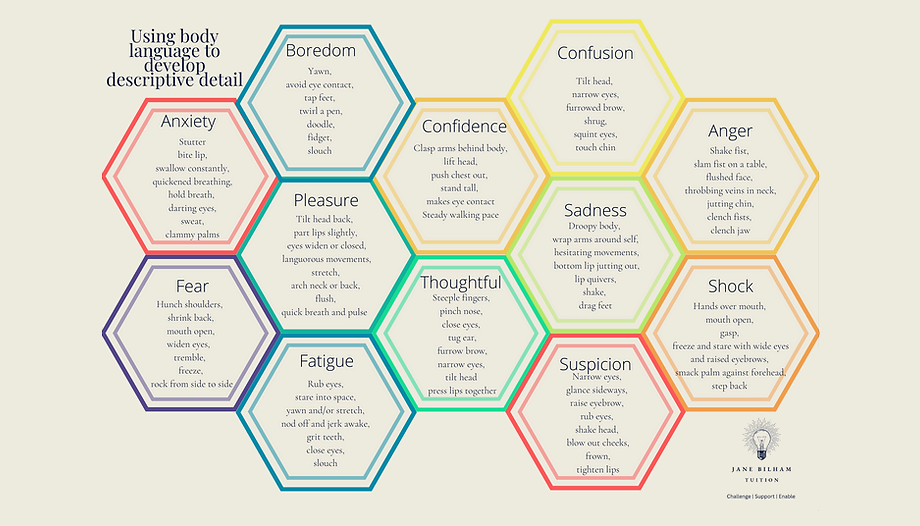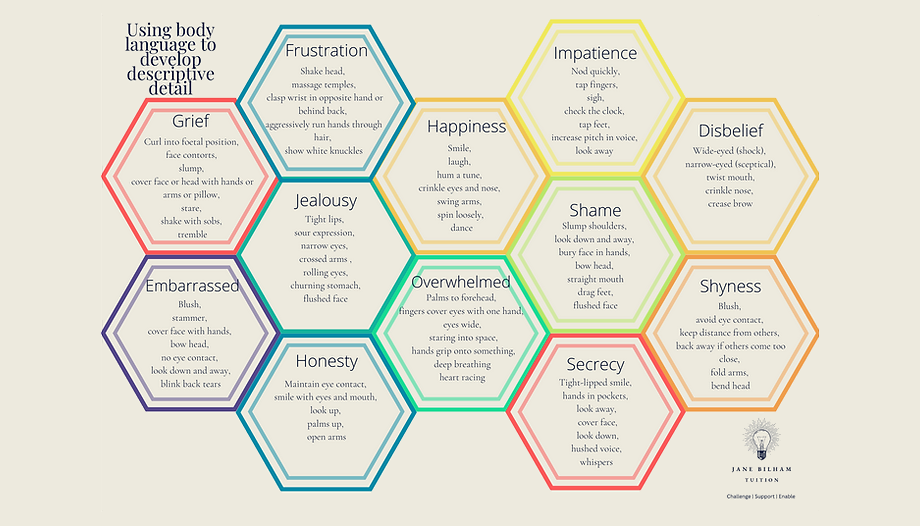Showing, not telling – old news or an imaginative writing essential?
As a wonderful mentor sagely advised – there’s nothing new in teaching, just a cycle of approaches that become more and less fashionable over time. I blame her for my hoarding tendencies as she also gave this as a reason to ‘never throw anything away’ – something I quite literally took to heart and ended up with 32 boxes of files, some bulging with OHTs, in the attic. (Yes, I am that old…)
This got me thinking about the focus of my lessons this week – In search of the holy grail that is a sustained response – I wanted my students to understand and apply the concept of extended detail in their descriptions. The planning strategy had allowed them to come up with original ideas that didn’t lapse into cliché, they were becoming more confident in using varied structures to create impact – now we needed to ensure that we were not simply skipping through our list and producing only half a side of A4.
After searching through my lesson resources, I stumbled across an old one titled: ‘Show, not tell.’ I winced. Over the years, I’d acquired a reputation for dynamic, innovative lessons – could I really use a lesson with the kind of cliché I’m trying to encourage my students to avoid? So I looked at it critically. It was actually pretty decent. I jazzed up the PowerPoint, removing the early days clip art animations that had been the signature style of my 25 year old self.
On closer inspection, I realised it was actually exactly what my students needed. It may be old hat for me, but this would be one of the first times they would explore this technique in a GCSE English lesson. And what do you know? When I introduced the lesson objectives laced with an apologetic “You’ve probably heard of this before, but I think it’s going to transform our writing….” How many do you think had actually heard of this technique?
Zero.
The blank stares from week one were back.
I thought of my mentor at that moment – what more definitive proof that approaches cycle in and out of fashion? Maybe my old OHTs would come in handy after all.
So we discussed what it meant to ‘show, not tell’ and explored a series of model answers that centred around using body language to show emotion. We used mini whiteboards to have a few guessing games of ‘which emotion are we writing?’
Their writing extended. It developed in sophistication. They began to create detailed descriptions that had depth and originality.
After this, we created a map of potential body language that could be associated with key emotions:


There is no doubt that by stopping and thinking about our bodies as a way of ‘showing’ emotion, rather than relying on ‘telling’ our reader, we have enhanced the sophistication of our writing. The beauty of this is that although some students became fixated on the vocabulary in our chart, in an exam situation, they only need to imagine the emotion they are trying to convey and think of how their body reacts.
We’ve still got a way to go to reach our destination of developed and detailed paragraphs but this felt like a breakthrough for many of us. It really got us thinking about the value of taking our reader on a journey and implying meanings rather than focusing on literal description.
And me? I learned to be more open minded about digging through those old resources and not turning up my nose at a technique because it’s stale to me – often it’s the first time my students will have experienced it. Judging from the number of Year Elevens stuffing the writing scaffold into their bags, with many of them asking permission to take a photo of it for future reference, the lesson seemed to be a success. As my Gran would say about her favourite black and white films: “It was an oldie, but a goodie.”
You can access various free and paid resources to further guide your revision here.
